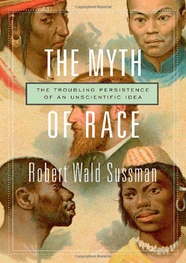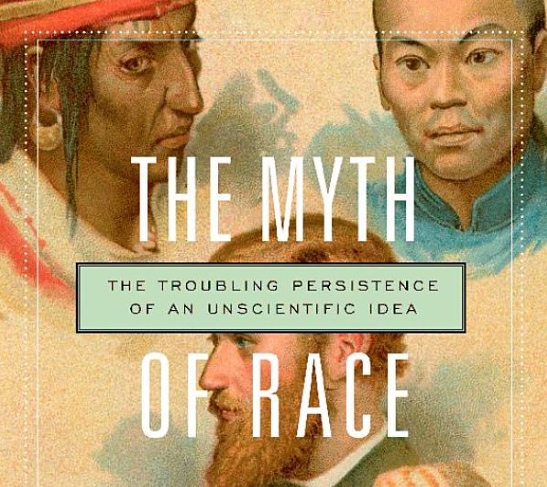This Is the History Behind the Awful Idea that Mankind Is Divided into Races
Recently, well known journalist, Guy Harrison, wrote a book on race, in which he stated that it wasn’t until he reached college and took his first anthropology course that he learned that biological races did not exist in humans. Of course many people in the United States are in the same situation as the strife in Ferguson, Missouri continues to make daily news. How can this be? Well it depends upon our history, upon our culture.
Europeans and Western European colonists of the United States first categorized “others” mainly with two fairly unchanging paradigms: polygenism and monogenism. Polygenecists (or pre-Adamites) believed that non-Western Europeans were not created by God but were on the earth before Adam and that physical characteristics and complex behaviors were biologically fixed and immutable. No environmental conditions could improve their lot. Monogenecists believed that all humans were created by God but that “others” had degenerated from the original ideal because they lived in less-than-ideal environmental conditions (either a bad climate and/or uncivilized social conditions). To monogenecists, these poor creatures could eventually be “saved” by introducing them to Western European civilization. Within both paradigms, Western Europeans were considered superior to other peoples or races.
 Until Darwin’s time, polygenism was
supported “scientifically” by a Humeian/Kantian ethnocentric
inductive philosophy that assumed that Western European civilization
was superior and could be created and achieved only by Western
Europeans. Also, they believed that certain physical and behavioral
traits (such as skull size and shape and mental capacity) were
superior in Western Europeans and had been created by God in that way
and were thus biologically fixed and immutable. The “science” of
the monogenecists was bolstered in the early nineteenth century by
Lamarck’s theory of the inheritance of acquired characteristics,
the idea that physical traits and complex behaviors could be changed
from one generation to the next by changing environmental conditions.
Until Darwin’s time, polygenism was
supported “scientifically” by a Humeian/Kantian ethnocentric
inductive philosophy that assumed that Western European civilization
was superior and could be created and achieved only by Western
Europeans. Also, they believed that certain physical and behavioral
traits (such as skull size and shape and mental capacity) were
superior in Western Europeans and had been created by God in that way
and were thus biologically fixed and immutable. The “science” of
the monogenecists was bolstered in the early nineteenth century by
Lamarck’s theory of the inheritance of acquired characteristics,
the idea that physical traits and complex behaviors could be changed
from one generation to the next by changing environmental conditions.
At the beginning of the twentieth century, however, Lamarck’s theory was discredited and Mendelian genetics was rediscovered. Laboratory experiments by August Weismann and others had discredited Lamarck’s theories and monogenism was left with no scientific backing; environment could not overcome heredity. Biological determinism and polygenic racism were considered the only “scientifically” valid explanations for the differences among human populations and between “unfit” individuals and those with superior heredity. Eugenics was born and became the dominant paradigm; it became conventional wisdom both scientifically and among the public in Western Europe and the United States in the early 1900s. The polygenecists considered monogenism to be dead: there was no valid environmental explanation for human variation. Some individuals and peoples were simply biologically inferior to (certain) Western Europeans and they carried and transmitted genetically fixed, inferior physical and behavioral traits.
Eugenics and scientific racism reached its peak in the United States in the mid-1920s. In 1924, Congress passed the Immigration Restriction Act and Virginia passed a sterilization law and a law preventing the marriage of people of two races. In the same year, as follow-ups to Madison Grant’s Passing of the Great Race (1916), many Grantian eugenicists published similar volumes. Eugenics courses became popular in high schools and colleges throughout the United States. American families entered “fitter family” contests and attended popular lectures by leading eugenicists, who by the 1920s had prominent positions in academe, business, and politics. The American Museum of Natural History displayed dioramas to educate the public about Madison Grant’s eugenic views on race. The eugenics organizations were thriving and were well connected to scientific organizations, private and government funding agencies, educational institutions, and politics and politicians. Eugenicists controlled the National Research Council. Scientific racism was rampant in American society. Nazism was on the rise in Europe.
However, the seeds of destruction of eugenics and scientific racism had already been planted. Franz Boas’s two volumes, Changes in Bodily Form and The Mind of PrimitiveMan, both published in 1911, had undermined the “science” of eugenics. Boas showed that physical traits, such as skull shape, could change with environmental influences in a single generation. He also presented a more plausible explanation for the social and behavioral differences among peoples around the world. He developed the scientific, anthropological concept of “culture.” According to this theory, differences among the peoples of the world were the product of their social histories and were determined by an interaction between their social and natural environments over generations. For the first time in history, a coherent theory of human variation explained differences in terms other than assumptions about the superiority of one group over the other and even questioned the biological validity of races among humans. The scientific evidence amassed for Boas’s cultural explanation was much more convincing than the myths that had been passed down through the previous five centuries. A new scientific paradigm began to replace the conventional wisdom of the past 500 years.
We can see a direct linear relationship of racist ideology through the centuries, and we can follow a historical pattern of racial prejudice and hatred. This prejudice is fueled by the same underlying theory that human variation can be easily put into simple categories (racial classifications), that these categories are inherently distinct, that they can be ranked in ways that make some “races” superior to others, and that many of the most important human characteristics (such as intelligence, criminality, aggression, etc.) are biologically determined and racially variable and cannot (or can only superficially) be influenced by environmental factors. This ancient ideology can be traced from its beginnings during the Spanish Inquisition and the pre-Adamite scientific justification of racism of the fifteenth century, through the initial period of European colonization, into the period of slavery in the eighteenth and nineteenth centuries, and into the eugenics movement and Nazism of the nineteenth and twentieth centuries.
This same ideology can currently be seen in a new “scientific racism” of the twenty-first century. We might have thought that it ended with the extremities of Nazism at the end of World War II, but we were wrong. Pre-Adamite-like biological determinism is still with us, and all of us who believe in human dignity, freedom, and justice must continue to fight against racial prejudice and those who spread hatred based on the idea that differences among humans exist. We must fight the racial prejudice that continues to haunt us, like the recent book by Nicholas Wade, A Troublesome Inheritance: Genes, Race and Human History. We must teach our children of the real wonders of human variation and enjoy the wonderful ethnic variation we find among us and around the world. We must teach tolerance and love, not the bigotry and hatred of the neo-racists as they spread their ancient and outdated myths of race and racism.
The idea of a unitary purely genetically based intelligence and of biologically distinct races among humans is as outdated scientifically as the ideas that the earth is flat or that it was created in 4004 b.c. Race is not a biological reality among humans; there are no human biological races. What humans have designated as races are based on nonexistent differences among peoples. People are more similar to one another biologically and genetically as a whole than they are to any of the classifications that racists have devised.
Once the history of racism is understood, however, it is easy to see how we have been led to think of race as reality. It is a part of our cultural history, a part of our everyday reality. We are raised to believe that biological races actually exist. This history is easily followed, through our literature and philosophy, for the past 500 years. An appreciation and understanding of the history of racism and race should help us understand where we are today and where we need to move in the future. Variation among humans is real. However, it is not based on any inborn heredity related to a racial history. It derives from our individual history, our individual genetics, and our culture.
Many of us continue to be influenced by the illegitimate goals of racists and racism. Racist history is part of our background, of our culture. However, the idea that race is a biological reality is a fallacy with a long and complex history. This is a history that we must all be aware of in our political, economic, and cultural interactions in the future. Biologically valid races are not real, but cultural racism is, and we must understand how this cultural reality affects our everyday interactions. We must continue to fight race and racism with our knowledge and assessment of the history of racist thinking.
